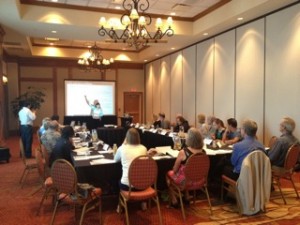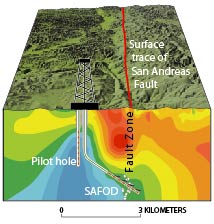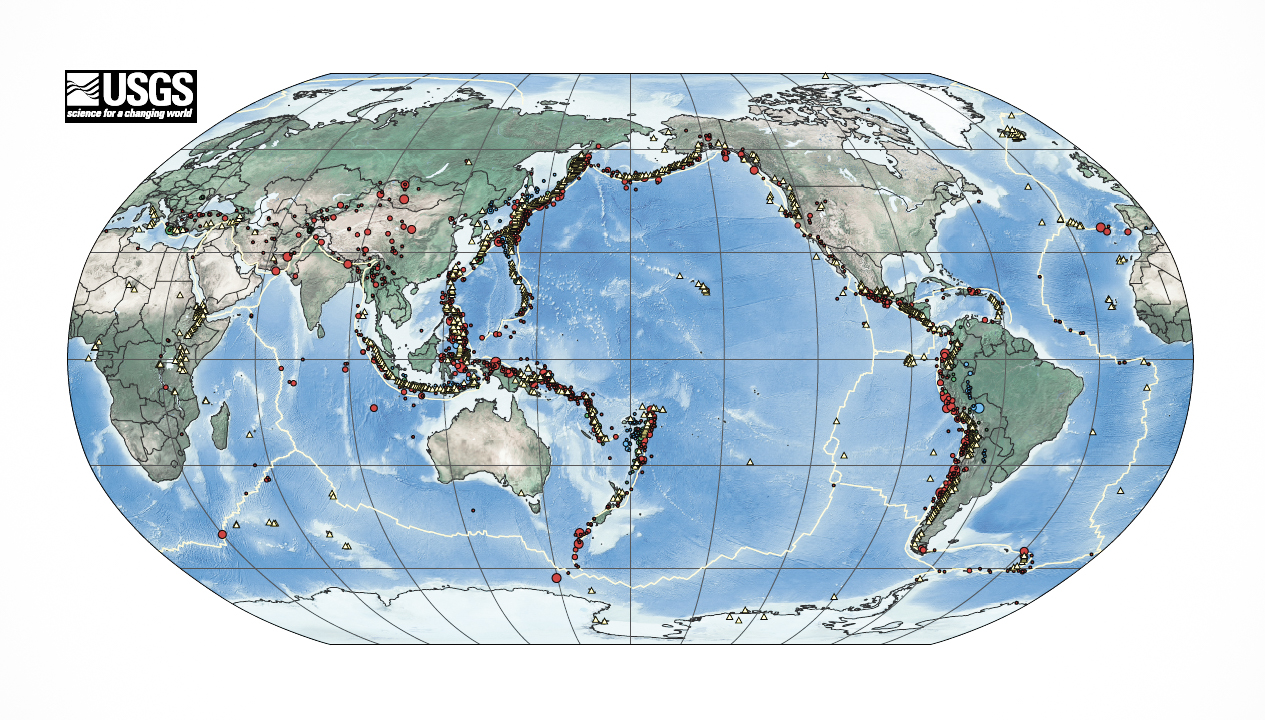Guest Blogger Sherry Hoffman is a Research and Professional Practice Faculty member at ArtCenter College of Design.
Colorado seems like a funny choice for a workshop on Earthquake Risk Perception. I was greeted in the Denver airport by multiple Tornado Shelter signs along with Baggage Claim and the Men and Women’s Restrooms. I didn’t realize that tornadoes were a part of their culture and way of life, the way perhaps earthquakes are a part of ours in Southern California. But we don’t have signs that tell us where to go for shelter or what to do in the event of an earthquake. It’s kind of unspoken or joked about but not part of our daily visual conscious.
I will be joined tomorrow by about 20 earth and social scientists. I had dinner with a few of them. They are very smart individuals and precise in their use of language, and as I discovered later, in a way that is completely foreign to others. They are also parents and newlyweds with kids and in-laws.
I was invited to the workshop for my marketing and communications sensibility. My background is in advertising and entertainment marketing, and the relationship between branding and design. In this workshop, I will probably ask a lot of questions that hopefully will get them thinking from different perspectives. I will be thinking about the role and power of design in creating social impact and changing human behavior. But mostly, I will listen.
 By 9am of the next day, the horseshoe table in Room 1 of the Renaissance boulder Flatiron Hotel had filled up with representatives from USGS (United States Geological Survey), CRED (Center for Research on Environmental Decisions, Columbia University), CalEMA (California Emergency Management Agency), NHRS (Natural Hazards Research Center, University of Colorado), M.A.C. (Margaret A. Cargill Foundation), and Designmatters, Art Center College of Design. We did a quick roundtable-style introduction of ourselves, stating our names, title, and one question we hoped to have addressed at the workshop. I asked about understanding our diverse audiences and finding ways to communicate with them that are timely, compelling, and relevant. Others asked about funding research, serving the underserved, and addressing science illiteracy among the general public.
By 9am of the next day, the horseshoe table in Room 1 of the Renaissance boulder Flatiron Hotel had filled up with representatives from USGS (United States Geological Survey), CRED (Center for Research on Environmental Decisions, Columbia University), CalEMA (California Emergency Management Agency), NHRS (Natural Hazards Research Center, University of Colorado), M.A.C. (Margaret A. Cargill Foundation), and Designmatters, Art Center College of Design. We did a quick roundtable-style introduction of ourselves, stating our names, title, and one question we hoped to have addressed at the workshop. I asked about understanding our diverse audiences and finding ways to communicate with them that are timely, compelling, and relevant. Others asked about funding research, serving the underserved, and addressing science illiteracy among the general public.
John Bwarie, USGS, deftly led us through the agenda and to his credit and to those sitting around the table, what ensued was a day full of meaningful dialogue, listening, and responding to vast amounts of information and opinions.
I learned that scientists talk a lot about what they know and what they still don’t know, and how best to share data with the general public. Some of the things they know are pretty scary to the average laymen; such as, they don’t know where all the fault lines are located or we have never gone 24 hours without an earthquake in Los Angeles. I made a decision to have a family planning meeting at dinner when I return to LA.
The focus of the day was messaging and creating a work plan to be completed over the next year by USGS (with the help of their friends around the horseshoe table). We looked at existing communications – primarily emails and maps created by geologists. Everyone agreed that there was room for improvement. We discussed other means of communicating like images and infographics. One of the academics said that his research showed that media-richness (using multiple communication mediums) helps user retention. There was quite a lot of discussion around the content of the message. What exactly do we want them to do beyond, “stop, drop, and roll”, and how does that differ depending on the situation and rate of probability?
John checked in with us periodically, to see if our question that we had posed at the beginning of the day had been answered. He often made space in the day for others to respond or for a discussion to shed some light on it.
 We had mini-presentations by the scientists. We learned earthquake vocabulary like foreshock, mainshock, and aftershocks, and how sometimes a foreshock is renamed as a mainshock. We talked about earthquake clusters and risk vs shaking. The scientists posed the question of what the public needs to know about operational earthquake forecasting, and again, what do we want them to do with the information.
We had mini-presentations by the scientists. We learned earthquake vocabulary like foreshock, mainshock, and aftershocks, and how sometimes a foreshock is renamed as a mainshock. We talked about earthquake clusters and risk vs shaking. The scientists posed the question of what the public needs to know about operational earthquake forecasting, and again, what do we want them to do with the information.
By the end of the day, together, we drafted a work plan that we all agreed on. We were asked about what we had learned in the workshop. There was an overwhelming sense of good will among participants. The social scientists were very grateful for having the opportunity to be heard by their earth scientist counterparts. People talked about listening across silos. The seismologists, as a group, seemed full of hope. Together, we can solve it seemed to be the unspoken group motto. John thanked us for our efforts and our contributions to making ours a safer nation. It elevated the entire experience for me when put in that light.
We were asked to reflect and consider how we might want to as individuals continue our involvement with this working group. At dinner, one of the USGS representatives, said that she could imagine my involvement every step of the way (through the work plan) to provide a sense of reason and perspective. The opportunities for design and design thinking seemed plentiful to me – developing and refining messages, conducting more human-centered research to complement the more quantitative style of the other academics and their desire for message testing, exploring formats and channels of message delivery, and helping to imagine and visualize all of the different scenarios.
It was a worthwhile endeavor and one that is truly at its beginning. For more information on USGS and their other initiatives, visit http://www.usgs.gov/
